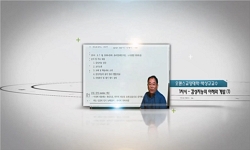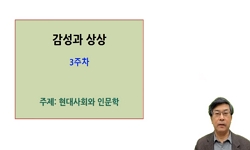Objective: While impaired facial expression recognition has been closely associated with reduced temporal lobe volume in patients with schizophrenia, this study aimed at examining whether empathy and social attribution affect such a relationship. Meth...
http://chineseinput.net/에서 pinyin(병음)방식으로 중국어를 변환할 수 있습니다.
변환된 중국어를 복사하여 사용하시면 됩니다.
- 中文 을 입력하시려면 zhongwen을 입력하시고 space를누르시면됩니다.
- 北京 을 입력하시려면 beijing을 입력하시고 space를 누르시면 됩니다.



Empathy and Social Attribution Skills Moderate the Relationship between Temporal Lobe Volume and Facial Expression Recognition Ability in Schizophrenia
한글로보기https://www.riss.kr/link?id=A107016319
-
저자
정민지 (고려대학교안암병원) ; Seung Yeon Baik (Clinical Emotion and Cognition Research Laboratory, Inje University) ; Yourim Kim (Clinical Emotion and Cognition Research Laboratory, Inje University) ; Sungkean Kim (Clinical Emotion and Cognition Research Laboratory, Inje University) ; Dongil Min (Clinical Emotion and Cognition Research Laboratory, Inje University) ; Jeong-Youn Kim (Inje University) ; Seunghee Won (Kyungpook National University) ; 이승환 (Inje University)

- 발행기관
- 학술지명
- 권호사항
-
발행연도
2020
-
작성언어
English
- 주제어
-
등재정보
KCI등재,SCIE,SCOPUS
-
자료형태
학술저널
-
수록면
362-374(13쪽)
-
KCI 피인용횟수
0
- DOI식별코드
- 제공처
-
0
상세조회 -
0
다운로드
부가정보
다국어 초록 (Multilingual Abstract)
Objective: While impaired facial expression recognition has been closely associated with reduced temporal lobe volume in patients with schizophrenia, this study aimed at examining whether empathy and social attribution affect such a relationship.
Methods: A total of 43 patients with schizophrenia and 43 healthy controls underwent a facial expression recognition task (FERT) and magnetic resonance imaging. Basic empathy scale and the social attribution task-multiple choice were used to measure empathy and social attribution.
Results: Patients with schizophrenia showed significant positive correlations between the total temporal lobe volume and the FERT-accuracy (FERT-ACC). Diminished temporal lobe volume predicted the impaired facial emotion recognition ability. Both empathy and social attribution played roles as moderators of the path from the left amygdala volume, left fusiform gyrus volume, both sides of the superior temporal gyrus volume, and left middle temporal gyrus volume to the FERT-ACC. In contrast, empathy alone functioned as a moderator between the right fusiform gyrus volume, right middle temporal gyrus volume, and FERT-ACC. No significant interaction was found for healthy controls.
Conclusion: Our results suggest that social cognition remediation training on empathy and social attribution, could buffer the negative effects of small temporal lobe volume on interpersonal emotional communication in patients with schizophrenia.
참고문헌 (Reference)
1 Ashburner J, "Voxel-based morphometry--the methods" 11 : 805-821, 2000
2 Wager TD, "Valence, gender, and lateralization of functional brain anatomy in emotion : a meta-analysis of findings from neuroimaging" 19 : 513-531, 2003
3 Ashburner J, "Unified segmentation" 26 : 839-851, 2005
4 Luckhaus C, "Training of affect recognition in schizophrenia patients with violent offences : behavioral treatment effects and electrophysiological correlates" 8 : 505-514, 2013
5 Habel U, "Training of affect recognition in schizophrenia : Neurobiological correlates" 5 : 92-104, 2010
6 Sprong M, "Theory of mind in schizophrenia : meta-analysis" 191 : 5-13, 2007
7 Yonelinas AP, "The nature of recollection and familiarity : a review of 30 years of research" 46 : 441-517, 2002
8 Hooker CI, "The influence of combined cognitive plus social-cognitive training on amygdala response during face emotion recognition in schizophrenia" 213 : 99-107, 2013
9 Davidson RJ, "The functional neuroanatomy of emotion and affective style" 3 : 11-21, 1999
10 Haxby JV, "The distributed human neural system for face perception" 4 : 223-233, 2000
1 Ashburner J, "Voxel-based morphometry--the methods" 11 : 805-821, 2000
2 Wager TD, "Valence, gender, and lateralization of functional brain anatomy in emotion : a meta-analysis of findings from neuroimaging" 19 : 513-531, 2003
3 Ashburner J, "Unified segmentation" 26 : 839-851, 2005
4 Luckhaus C, "Training of affect recognition in schizophrenia patients with violent offences : behavioral treatment effects and electrophysiological correlates" 8 : 505-514, 2013
5 Habel U, "Training of affect recognition in schizophrenia : Neurobiological correlates" 5 : 92-104, 2010
6 Sprong M, "Theory of mind in schizophrenia : meta-analysis" 191 : 5-13, 2007
7 Yonelinas AP, "The nature of recollection and familiarity : a review of 30 years of research" 46 : 441-517, 2002
8 Hooker CI, "The influence of combined cognitive plus social-cognitive training on amygdala response during face emotion recognition in schizophrenia" 213 : 99-107, 2013
9 Davidson RJ, "The functional neuroanatomy of emotion and affective style" 3 : 11-21, 1999
10 Haxby JV, "The distributed human neural system for face perception" 4 : 223-233, 2000
11 Goghari VM, "Temporal lobe structures and facial emotion recognition in schizophrenia patients and nonpsychotic relatives" 37 : 1281-1294, 2011
12 Aleman A, "Strange feelings: do amygdala abnormalities dysregulate the emotional brain in schizophrenia?" 77 : 283-298, 2005
13 Aggleton JP, "Sparing of the familiarity component of recognition memory in a patient with hippocampal pathology" 43 : 1810-1823, 2005
14 Kim DW, "Source activation during facial emotion perception correlates with positive and negative symptoms scores of schizophrenia" 2013 : 6325-6328, 2013
15 Wölwer W, "Social-cognitive remediation in schizophrenia : generalization of effects of the Training of Affect Recognition(TAR)" 37 (37): S63-S70, 2011
16 Allison T, "Social perception from visual cues : role of the STS region" 4 : 267-278, 2000
17 Kurtz MM, "Social cognitive training for schizophrenia : a meta-analytic investigation of controlled research" 38 : 1092-1104, 2012
18 Lee KH, "Social cognition, brain networks and schizophrenia" 34 : 391-400, 2004
19 Horan WP, "Social cognition training for individuals with schizophrenia : emerging evidence" 11 : 205-252, 2008
20 Arioli M, "Social cognition through the lens of cognitive and clinical neuroscience" 2018 : 4283427-, 2018
21 Marwick K, "Social cognition in schizophrenia : a review of face processing" 88 : 43-58, 2008
22 Fried I, "Single neuron activity in human hippocampus and amygdala during recognition of faces and objects" 18 : 753-765, 1997
23 Wölwer W, "Remediation of impairments in facial affect recognition in schizophrenia : efficacy and specificity of a new training program" 80 : 295-303, 2005
24 Fitzpatrick P, "Relationship between theory of mind, emotion recognition, and social synchrony in adolescents with and without autism" 9 : 1337-, 2018
25 Honea R, "Regional deficits in brain volume in schizophrenia : a meta-analysis of voxel-based morphometry studies" 162 : 2233-2245, 2005
26 Walker E, "Recognition and identification of facial stimuli by schizophrenics and patients with affective disorders" 23 : 37-44, 1984
27 Hamann S, "Positive and negative emotional verbal stimuli elicit activity in the left amygdala" 13 : 15-19, 2002
28 Furl N, "Modulation of perception and brain activity by predictable trajectories of facial expressions" 20 : 694-703, 2010
29 Kuroki N, "Middle and inferior temporal gyrus gray matter volume abnormalities in first-episode schizophrenia : an MRI study" 163 : 2103-2110, 2006
30 Wright IC, "Meta-analysis of regional brain volumes in schizophrenia" 157 : 16-25, 2000
31 Brüne M, "Mental state attribution, neurocognitive functioning, and psychopathology:what predicts poor social competence in schizophrenia best?" 92 : 151-159, 2007
32 Baas D, "Lateralization of amygdala activation : a systematic review of functional neuroimaging studies" 45 : 96-103, 2004
33 Park JY, "Korean Facial Expressions of Emotion(KOFEE)" Section of Affect & Neuroscience, Institute of Behavioral Science in Medicine, Yonsei University College of Medicine 2011
34 Lindenmayer JP, "Improving social cognition in schizophrenia : a pilot intervention combining computerized social cognition training with cognitive remediation" 39 : 507-517, 2013
35 Horat SK, "Impaired social cognition in schizophrenia during the ultimatum game : an EEG study" 192 : 308-316, 2018
36 Adolphs R, "Impaired recognition of emotion in facial expressions following bilateral damage to the human amygdala" 372 : 669-672, 1994
37 Namiki C, "Impaired facial emotion recognition and reduced amygdalar volume in schizophrenia" 156 : 23-32, 2007
38 Exner C, "Impaired emotional learning and reduced amygdala size in schizophrenia : a 3-month follow-up" 71 : 493-503, 2004
39 Rugg MD, "Human recognition memory : a cognitive neuroscience perspective" 7 : 313-319, 2003
40 Nelson MD, "Hippocampal volume reduction in schizophrenia as assessed by magnetic resonance imaging : a meta-analytic study" 55 : 433-440, 1998
41 Velakoulis D, "Hippocampal and amygdala volumes according to psychosis stage and diagnosis : a magnetic resonance imaging study of chronic schizophrenia, first-episode psychosis, and ultra-high-risk individuals" 63 : 139-149, 2006
42 Wookyoung Jung, "Heart and Brain Interaction of Psychiatric Illness: A Review Focused on Heart Rate Variability, Cognitive Function, and Quantitative Electroencephalography" 대한정신약물학회 17 (17): 459-474, 2019
43 Onitsuka T, "Fusiform gyrus volume reduction and facial recognition in chronic schizophrenia" 60 : 349-355, 2003
44 Hyeonjin Jeon, "From Neurons to Social Beings: Short Review of the Mirror Neuron System Research and Its Socio-Psychological and Psychiatric Implications" 대한정신약물학회 16 (16): 18-31, 2018
45 Sachs G, "Facial recognition deficits and cognition in schizophrenia" 68 : 27-35, 2004
46 Mandal MK, "Facial expressions of emotions and schizophrenia : a review" 24 : 399-412, 1998
47 Kohler CG, "Facial emotion recognition in schizophrenia : intensity effects and error pattern" 160 : 1768-1774, 2003
48 Li H, "Facial emotion processing in schizophrenia : a meta-analysis of functional neuroimaging data" 36 : 1029-1039, 2010
49 Feinberg TE, "Facial discrimination and emotional recognition in schizophrenia and affective disorders" 43 : 276-279, 1986
50 Wölwer W, "Facial affect recognition in the course of schizophrenia" 246 : 165-170, 1996
51 Getz GE, "Facial affect recognition deficits in bipolar disorder" 9 : 623-632, 2003
52 Lee SH, "Event-related potential patterns and gender effects underlying facial affect processing in schizophrenia patients" 67 : 172-180, 2010
53 Canli T, "Event-related activation in the human amygdala associates with later memory for individual emotional experience" 20 : RC99-, 2000
54 Kosonogov V, "Empathy, but not mimicry restriction, influences the recognition of change in emotional facial expressions" 68 : 2106-2115, 2015
55 Trautmann SA, "Emotions in motion : dynamic compared to static facial expressions of disgust and happiness reveal more widespread emotion-specific activations" 1284 : 100-115, 2009
56 Peelen MV, "Emotional attention in acquired prosopagnosia" 4 : 268-277, 2009
57 Maat A, "Emotion recognition and theory of mind are related to gray matter volume of the prefrontal cortex in schizophrenia" 26 : 255-264, 2016
58 Olderbak S, "Emotion perception and empathy : an individual differences test of relations" 17 : 1092-1106, 2017
59 Lee JS, "Early visual processing for low spatial frequency fearful face is correlated with cortical volume in patients with schizophrenia" 12 : 1-14, 2015
60 Puce A, "Differential sensitivity of human visual cortex to faces, letterstrings, and textures : a functional magnetic resonance imaging study" 16 : 5205-5215, 1996
61 Kosaka H, "Differential amygdala response during facial recognition in patients with schizophrenia : an fMRI study" 57 : 87-95, 2002
62 Jolliffe D, "Development and validation of the Basic Empathy Scale" 29 : 589-611, 2006
63 Morrison RL, "Deficits in facial-affect recognition and schizophrenia" 14 : 67-83, 1988
64 Armony JL, "Current emotion research in behavioral neuroscience : the role(s)of the amygdala" 5 : 104-115, 2013
65 Ashburner J, "Computational anatomy with the SPM software" 27 : 1163-1174, 2009
66 Hamann S, "Cognitive and neural mechanisms of emotional memory" 5 : 394-400, 2001
67 Popova P, "Changing facial affect recognition in schizophrenia : effects of training on brain dynamics" 6 : 156-165, 2014
68 Silver H, "Brief emotion training improves recognition of facial emotions in chronic schizophrenia. A pilot study" 128 : 147-154, 2004
69 Steen RG, "Brain volume in first-episode schizophrenia : systematic review and meta-analysis of magnetic resonance imaging studies" 188 : 510-518, 2006
70 Gur RC, "Brain activation during facial emotion processing" 16 : 651-662, 2002
71 Lawrie SM, "Brain abnormality in schizophrenia. A systematic and quantitative review of volumetric magnetic resonance imaging studies" 172 : 110-120, 1998
72 WonKyung Cho, "Biological Aspects of Aggression and Violence in Schizophrenia" 대한정신약물학회 17 (17): 475-486, 2019
73 Klin A, "Attributing social meaning to ambiguous visual stimuli in higher-functioning autism and Asperger syndrome : the social attribution task" 41 : 831-846, 2000
74 Klin A, "Attributing social and physical meaning to ambiguous visual displays in individuals with higher-functioning autism spectrum disorders" 61 : 40-53, 2006
75 Preacher KJ, "Asymptotic and resampling strategies for assessing and comparing indirect effects in multiple mediator models" 40 : 879-891, 2008
76 Kleinhans NM, "Association between amygdala response to emotional faces and social anxiety in autism spectrum disorders" 48 : 3665-3670, 2010
77 Heider F, "An experimental study of apparent behavior" 57 : 243-259, 1944
78 Shenton ME, "A review of MRI findings in schizophrenia" 49 : 1-52, 2001
79 Aas M, "A history of childhood trauma is associated with slower improvement rates : findings from a one-year follow-up study of patients with a first-episode psychosis" 16 : 126-, 2016
80 Ashburner J, "A fast diffeomorphic image registration algorithm" 38 : 95-113, 2007
동일학술지(권/호) 다른 논문
-
A Review of Behavioral Tests to Evaluate Different Types of Anxiety and Anti-anxiety Effects
- 대한정신약물학회
- Himanshu
- 2020
- KCI등재,SCIE,SCOPUS
-
Clozapine in the Time of COVID-19
- 대한정신약물학회
- Xavier Boland
- 2020
- KCI등재,SCIE,SCOPUS
-
Maladaptive Alterations of Defensive Response Following Developmental Complex Stress in Rats
- 대한정신약물학회
- Junhyung Kim
- 2020
- KCI등재,SCIE,SCOPUS
-
- 대한정신약물학회
- Pierre Ellul
- 2020
- KCI등재,SCIE,SCOPUS
분석정보
인용정보 인용지수 설명보기
학술지 이력
| 연월일 | 이력구분 | 이력상세 | 등재구분 |
|---|---|---|---|
| 2023 | 평가예정 | 해외DB학술지평가 신청대상 (해외등재 학술지 평가) | |
| 2022-02-15 | 학회명변경 | 영문명 : 미등록 -> Korean College of Neuropsychopharmacology |  |
| 2020-01-01 | 평가 | 등재학술지 유지 (해외등재 학술지 평가) |  |
| 2013-10-01 | 평가 | 등재학술지 선정 (기타) |  |
| 2012-01-01 | 평가 | 등재후보학술지 유지 (기타) |  |
| 2011-01-01 | 평가 | 등재후보 1차 PASS (등재후보1차) |  |
| 2010-01-01 | 평가 | 등재후보 1차 FAIL (등재후보2차) |  |
| 2009-01-01 | 평가 | 등재후보 1차 PASS (등재후보1차) |  |
| 2007-01-01 | 평가 | SCOPUS 등재 (신규평가) |  |
학술지 인용정보
| 기준연도 | WOS-KCI 통합IF(2년) | KCIF(2년) | KCIF(3년) |
|---|---|---|---|
| 2016 | 1.61 | 0.26 | 1.28 |
| KCIF(4년) | KCIF(5년) | 중심성지수(3년) | 즉시성지수 |
| 1.09 | 0.96 | 0.376 | 0.11 |




 KCI
KCI






